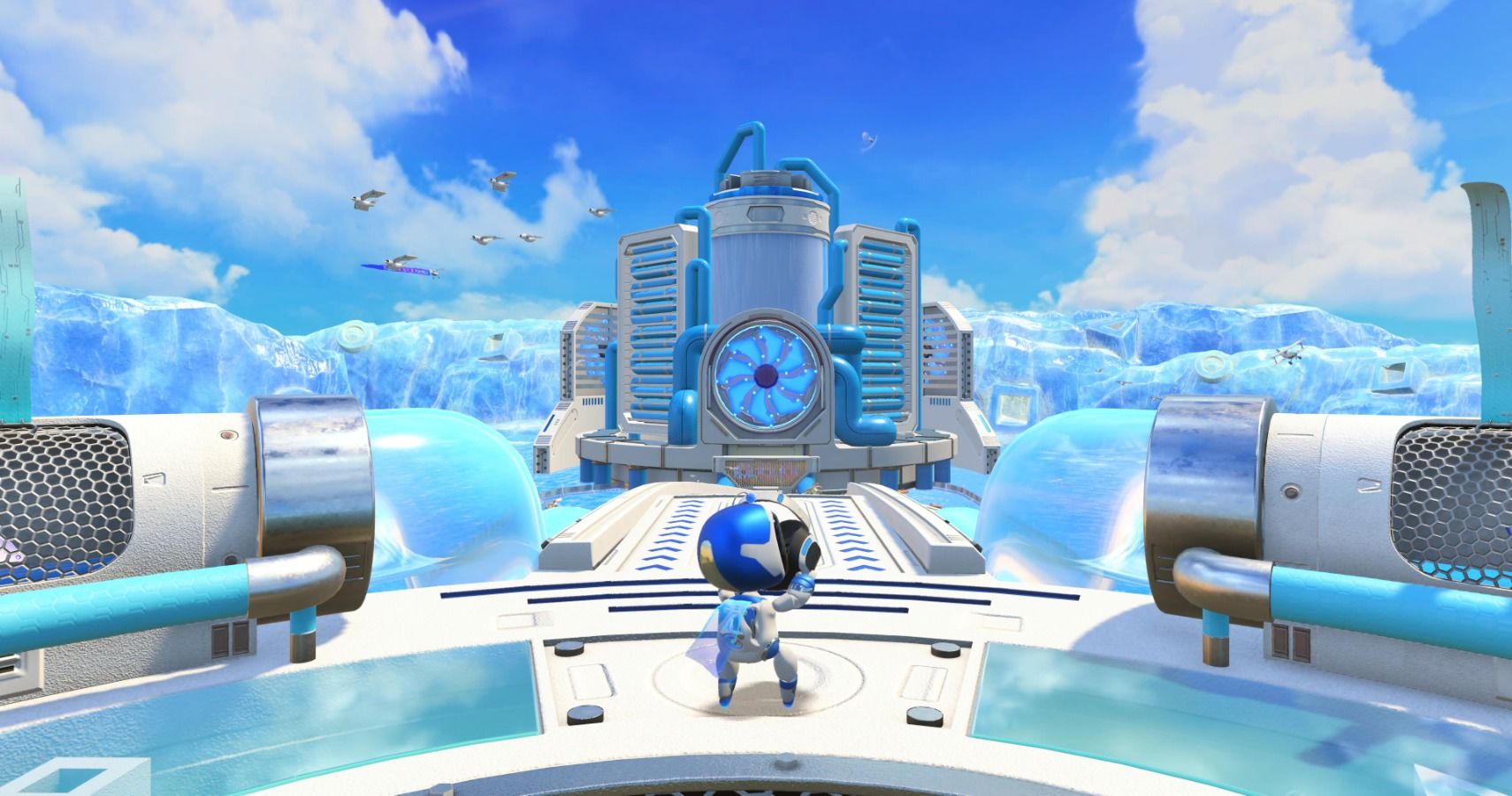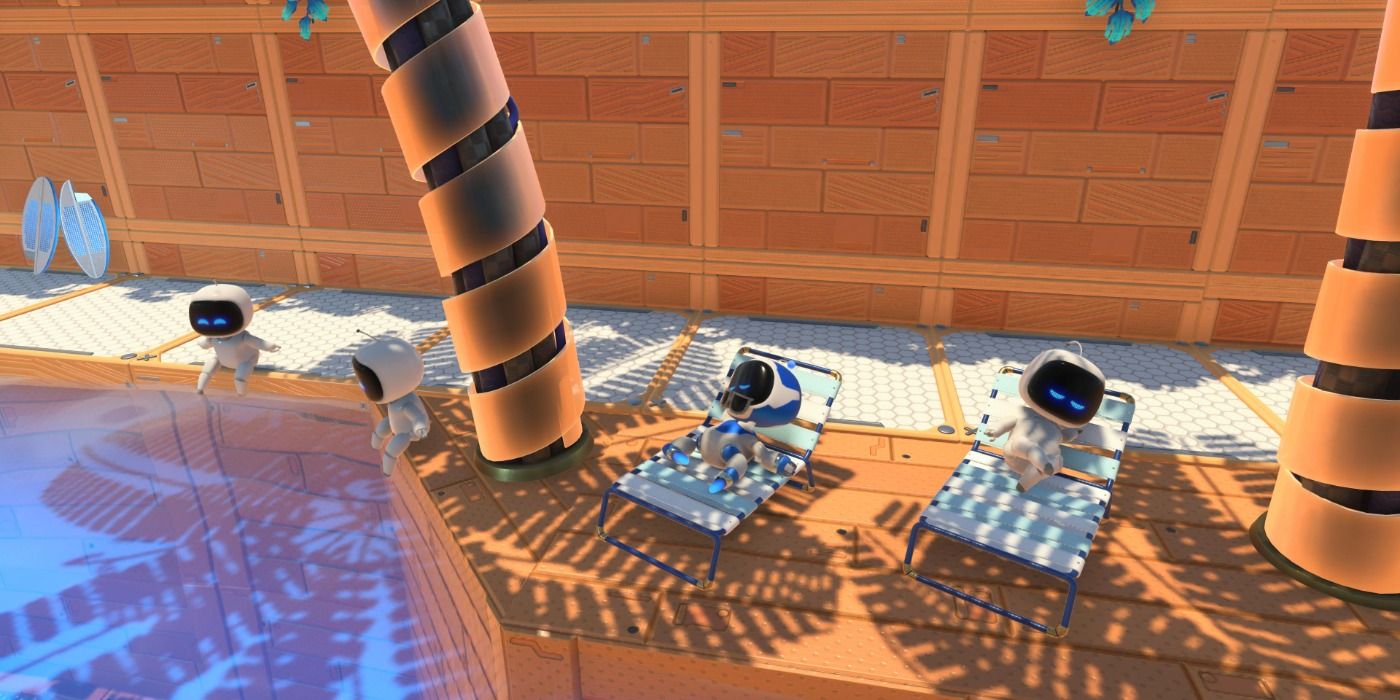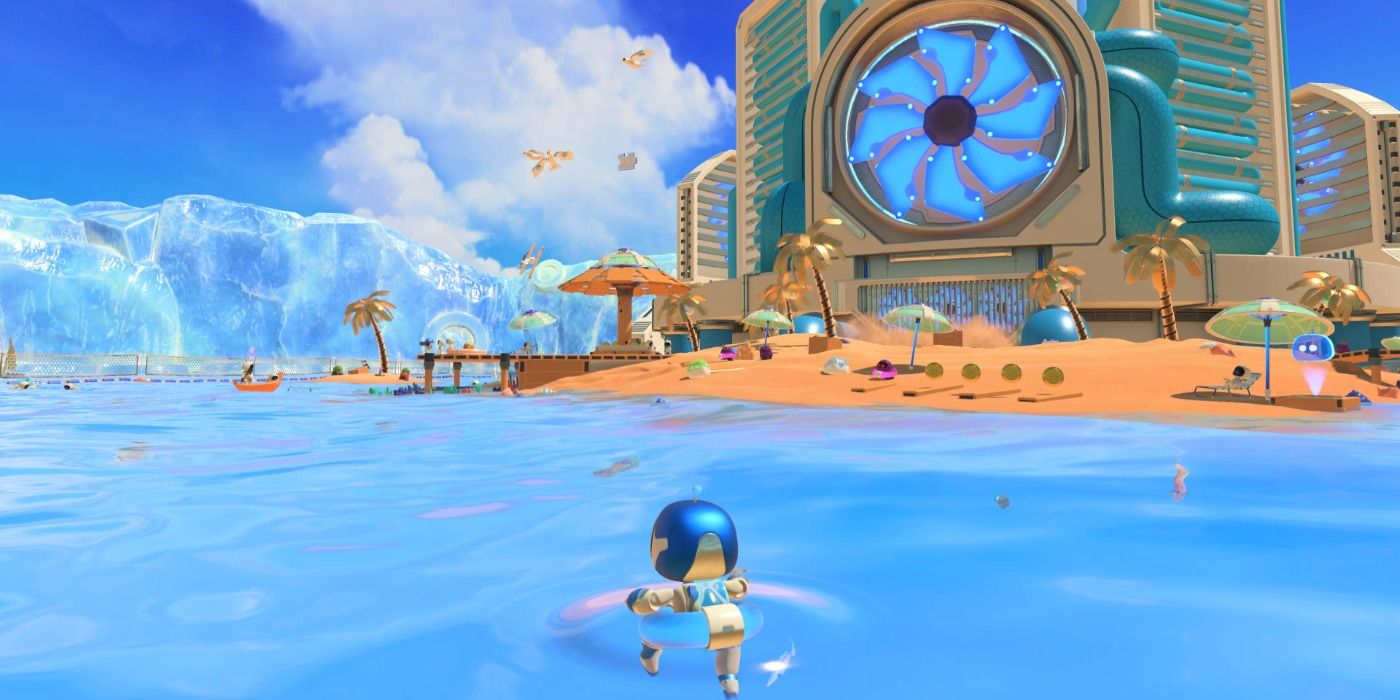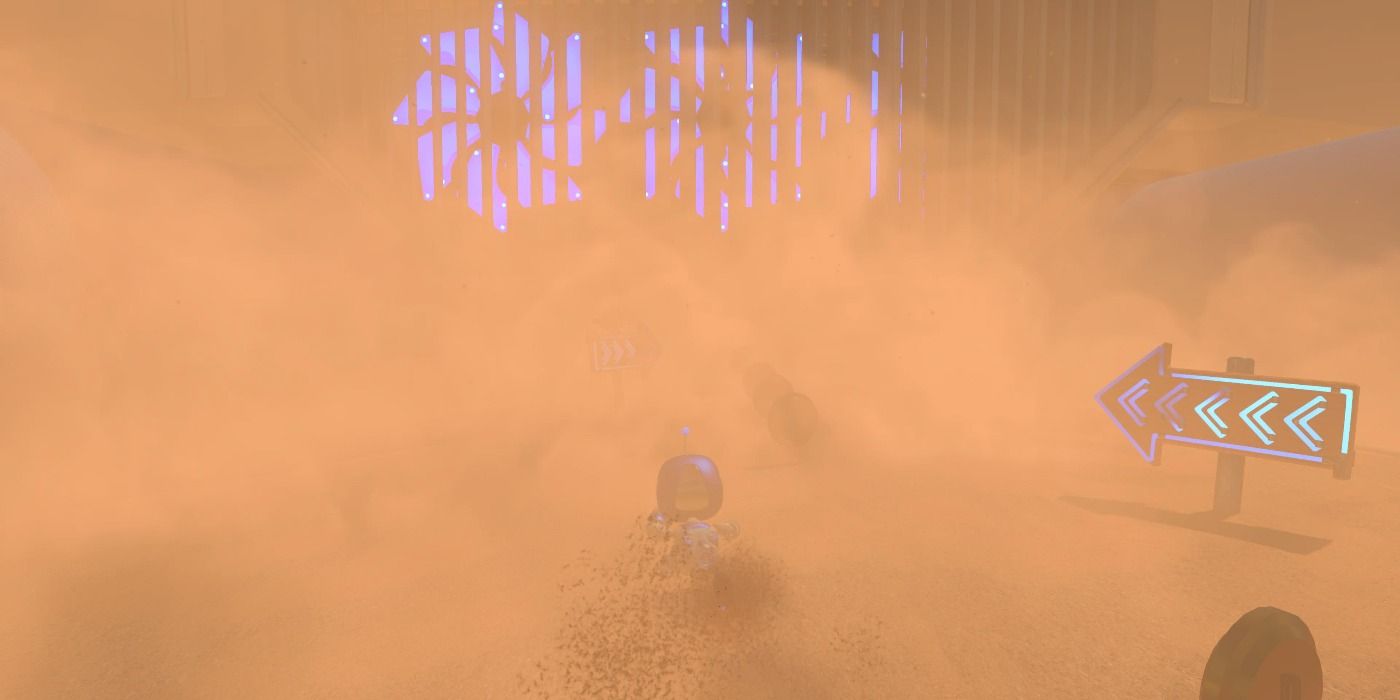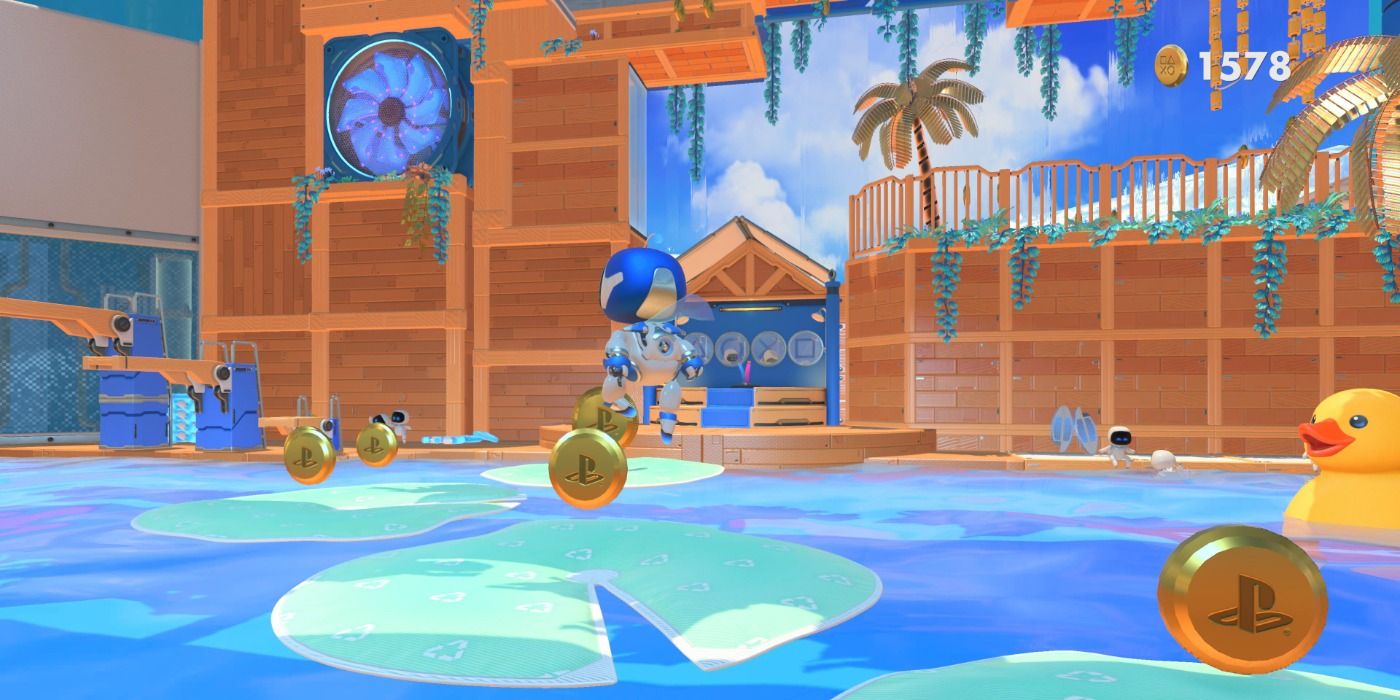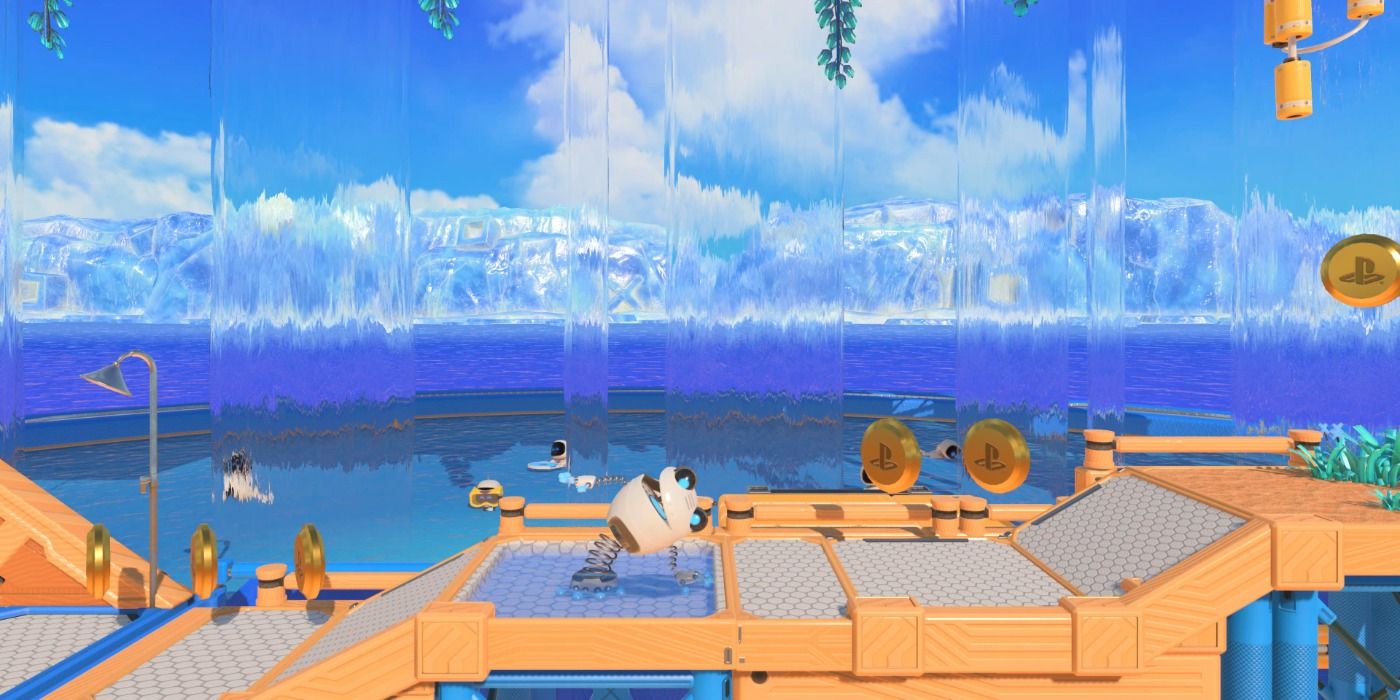I’ve spent a couple of hours with Astro’s Playroom on PS5 and it’s a showcase for what the DualSense controller can do. Working from Sony’s NDA restrictions, I can only talk about one level - Cooling Springs - but it shows off most of the new features of the PS5’s next-gen controller. It’s an impressive piece of kit.
Cooling Springs is a platforming playground. It begins with you up high, looking out at Sega-blue skies and transparent water as biplanes and seagulls whizz overhead. You hop onto a slide and careen down it, plopping into the water and equipping a rubber ring. Then it’s onto the beach to batter bots, collect coins, and snuffle out secrets. It’s full of charming animations and little details - Easter eggs for iconic PlayStation games and old hardware - and gives a small taste of what the future of video games will be like once new titles are eventually released.
The main features of the DualSense controller are its haptic feedback, which allows you to feel more subtle vibrations that mimic what happens on-screen, the adaptive triggers, which can dynamically increase and decrease tension so you have to fight against them, and the built-in mic, which you can use to blow a gust of wind into the game. Then there’s the stuff we had last-gen: the touchpad, motion sensors, and the controller speaker. All of these aspects work together to further sell the illusion of what you’re playing.
At one point early on in the level, you walk through a sandstorm as tiny vibrations jump around the controller. And I’m not talking vibrations like you’ve felt before in other controllers - these are like pins and needles, if pins and needles were nice. While that sensation happens, the DualSense speaker kicks out a tinny, rattling sound as if grains of sand are jumping around inside the pad. It’s very effective.
Shortly after, I’m zipping up a jacket on a robotic spring suit with the touchpad, and then I’m switched from 3D platforming to side-on. Here, controlling a spring, I use the motion sensors to lean like a jack in the box, my robotic head lolling to the side with each tilt of the controller. I have to charge up to jump, which is where I get my first try of the adaptive triggers, which suddenly go tight to mimic a taut spring.
I won’t lie - the first time the controller did this, I was terrified of breaking it. It feels stuck, but you just have to ignore all your senses screaming at you to stop and just pull the trigger down. Once you get used to it, it adds another layer of physicality that connects you to the game.
At one point, I jump onto a floating block of ice with a propellor attached to it and a tooltip prompts me to blow into the controller’s mic. I blow into it and the propellor spins up, sending the block sailing through the water. This feels a bit more gimmicky than the rest, and I can’t see myself wanting to blow at my pad for many other games. I especially don’t want anyone else blowing COVID-19 all over my DualSense.
The haptic feedback is easily the most impressive aspect of the DualSense so far. Skating across ice in Cooling Springs actually feels like skating across ice, somehow - even though you’re holding a controller in your living room. It’s wizardry. I just hope third-party games make full use of both it and the adaptive triggers, since Astro’s Playroom is clearly designed as a showcase for DualSense. It absolutely does its job and I can’t wait to spend more time with it. The PS5’s DualSense is the most “next-gen” thing I’ve experienced so far.
Astro's Playroom comes included on PS5 and the game can be completed fully in a single sitting.

